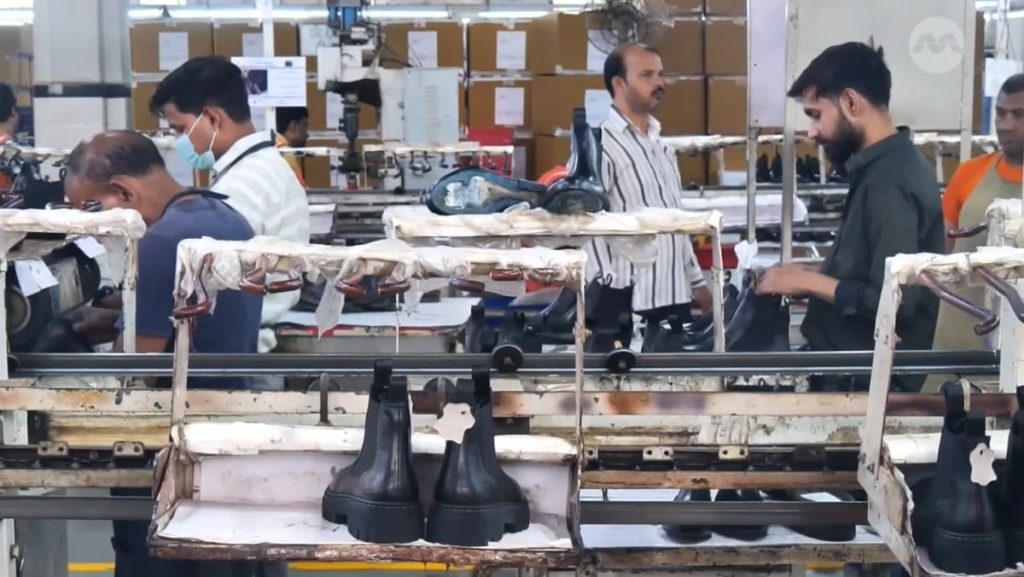The leather industry in Agra is a vital source of employment, particularly for traditional and labour-intensive sectors like leather and textile. In Agra, the local leather industry plays a significant role, producing about 30 percent of all leather shoes in India. One of the major players in this industry is the Dawar Group, which employs over 1,500 individuals and exports its footwear both domestically and internationally. The company has benefited from the business-friendly policies of the BJP government, such as simplified permit processes, lower corporate taxes, and easier insolvency procedures. However, the high cost of production in this sector makes it challenging to generate high profits, with Dawar Group founder Puran Dawar highlighting the significant capital costs in India as compared to other countries.
Despite the government’s efforts to promote initiatives like “Make in India,” individuals like Naval Kishore, who works in the Dawar factory, find it challenging to start their own businesses due to financial constraints and bureaucratic obstacles. Small businesses in Agra’s leather market also feel disconnected from these schemes, as they struggle to benefit from them. However, economists believe that over time, these policies will begin to benefit individuals like Naval Kishore and small business owners. Dr. Rajat Kathuria, dean of the Shiv Nadar University’s School of Humanities and Social Sciences, emphasized the gradual nature of the trickle-down effect of market policies on rural areas like Agra, indicating that it takes time for the benefits to reverberate through the economy.
The challenges faced by entrepreneurs in the leather industry highlight the complexities of trying to navigate bureaucratic hurdles and financial constraints in starting a business. The high cost of production and lack of access to necessary resources make it difficult for individuals like Naval Kishore to establish their own ventures, despite their experience in the sector. Furthermore, small businesses in Agra’s leather market struggle to capitalize on government schemes designed to promote local industries like “Make in India.” These challenges underscore the need for tailored support and assistance to enable aspiring entrepreneurs to succeed in the competitive market.
Despite the obstacles faced by individuals like Naval Kishore and small businesses in Agra’s leather market, there is optimism that government policies aimed at promoting local industries will eventually benefit them. The slow trickle-down effect of market policies into rural areas like Agra, highlighted by Dr. Rajat Kathuria, suggests that it may take time for the benefits to reach those at the grassroots level. However, as these policies begin to permeate through the economy, there is hope that entrepreneurs like Naval Kishore and small business owners will be better positioned to benefit from government initiatives and grow their businesses. The challenges faced by the leather industry in Agra reflect the broader issues of access to resources, financial constraints, and bureaucratic obstacles that entrepreneurs encounter in trying to establish and expand their businesses.















